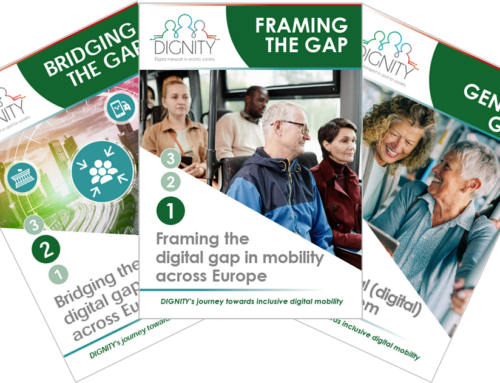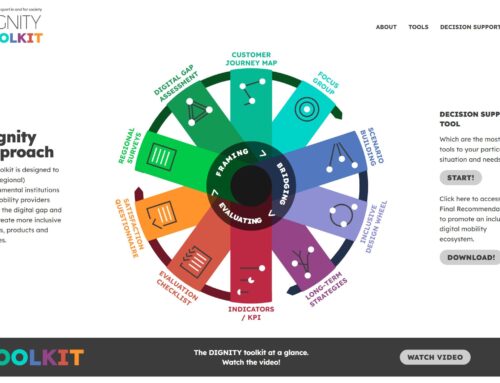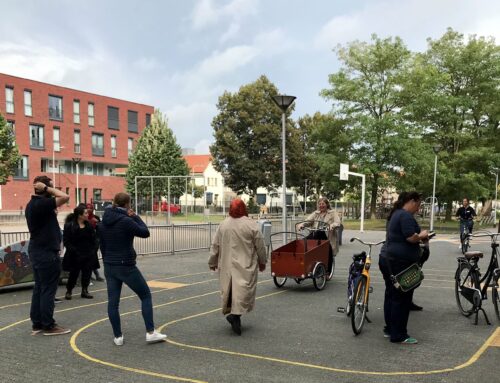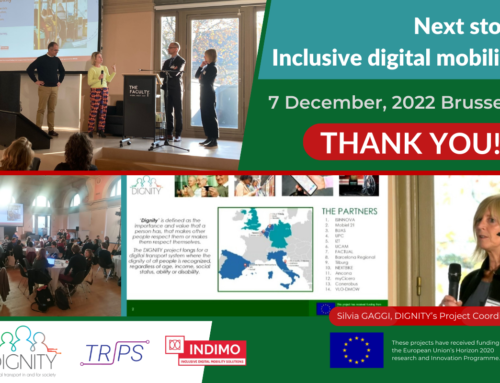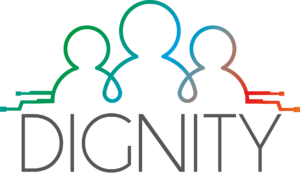One of the aims of the DIGNITY project is to better understand and meet the needs of user groups that are particularly vulnerable to exclusion from digital transport options. To start building this understanding, we conducted a literature review, and identified some of the key vulnerable groups. One of these is the older population, which we have defined approximately as those aged 65 and over.
Many older people experience difficulties with public transport[1]
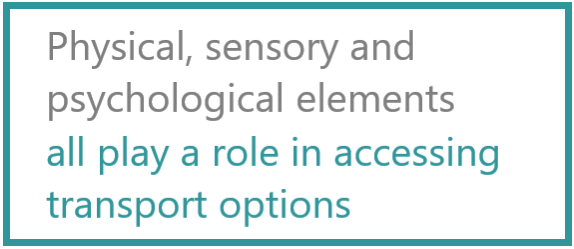 These include physical and sensory access issues, such as problems walking along lengthy platforms or reading signage. Psychological constraints, such as fear of falling over or catching the wrong bus, also play a role. Planning journeys can be an issue, as well as the challenges of changing transport modes and platforms, often under time pressure.
These include physical and sensory access issues, such as problems walking along lengthy platforms or reading signage. Psychological constraints, such as fear of falling over or catching the wrong bus, also play a role. Planning journeys can be an issue, as well as the challenges of changing transport modes and platforms, often under time pressure.
Digital transport services could help. Digital solutions have the potential to simplify planning, join transport modes together more seamlessly, provide advance information and facilitate access to support. However, these services are only useful if people can access and use them effectively.
The risk of digital exclusion for older people
Older people, who are at particular risk of digital exclusion, might find using technological solutions for transport problematic. Previous surveys show that digital technology use and digital competence are both lower among older age groups[2]. While some older people are expert technology users, many struggle. This is partly a result of changes in physical, sensory and cognitive capabilities[3], as well as prior experience with, understanding of, and attitudes towards technology. A large proportion of older people have lower levels of confidence in their ability to use technology, are not convinced of its usefulness or have trust and privacy concerns[4].
Designing solutions that are accessible to everyone
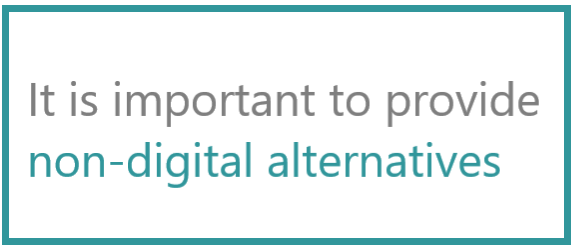 Specific care should be given to the design of digital transport services to be inclusive of older people. User involvement during the design process is vital, as this helps to ensure that user needs and concerns are understood and addressed. Interfaces should be clear, simple and accessible, avoiding the use of jargon, unexplained icons and hidden features. It is also important to provide non-digital alternatives that do not rely on users having access to a smartphone, a computer or the Internet.
Specific care should be given to the design of digital transport services to be inclusive of older people. User involvement during the design process is vital, as this helps to ensure that user needs and concerns are understood and addressed. Interfaces should be clear, simple and accessible, avoiding the use of jargon, unexplained icons and hidden features. It is also important to provide non-digital alternatives that do not rely on users having access to a smartphone, a computer or the Internet.
The DIGNITY project is continuing to explore the needs and characteristics of this and other user groups through surveys, interviews and customer journey mapping. These findings will be applied in DIGNITY’s pilot cities to help build concrete guidance on how to ensure transport services are accessible to the widest possible audience.
[1] Fiedler, M. (2007). Older people and public transport challenges and chances of an ageing society. https://www.emta.com/IMG/pdf/Final_Report_Older_People_protec.pdf
[2] European Commission (2019) DESI, The Digital Economy and Society Index (DESI). Available at: https://ec.europa.eu/digital-single-market/en/desi; Goodman-Deane, J., Bradley, M. and Clarkson, P.J. (2020b). Digital technology competence and experience in the UK population: who can do what. In Proceedings of Ergonomics and Human Factors 2020. Stratford-upon-Avon, UK. Available at: https://publications.ergonomics.org.uk/uploads/Digital-technology-competence-and-experience-in-the-UK-population-who-can-do-what.pdf
[3] Hawthorn, D. (2000). Possible implications of aging for interface designers. Interacting with Computers, 12, 507-528
[4] Harvey, J., Guo, W., & Edwards, S. (2019). Increasing mobility for older travellers through engagement with technology. Transportation Research Part F: Traffic Psychology and Behaviour, 60, 172–184. https://doi.org/10.1016/j.trf.2018.10.019


